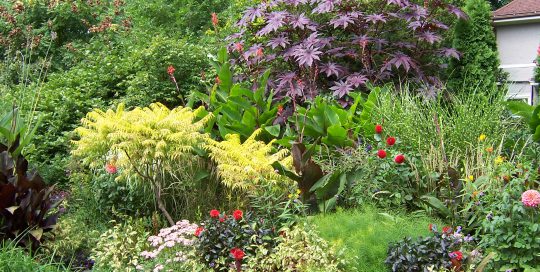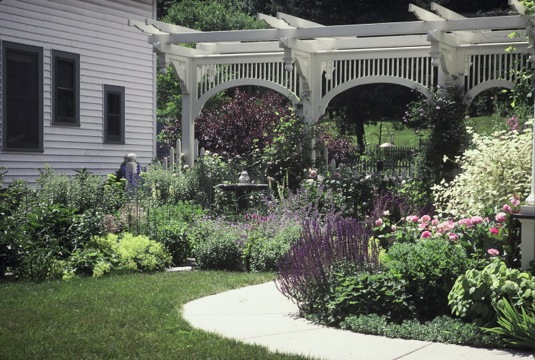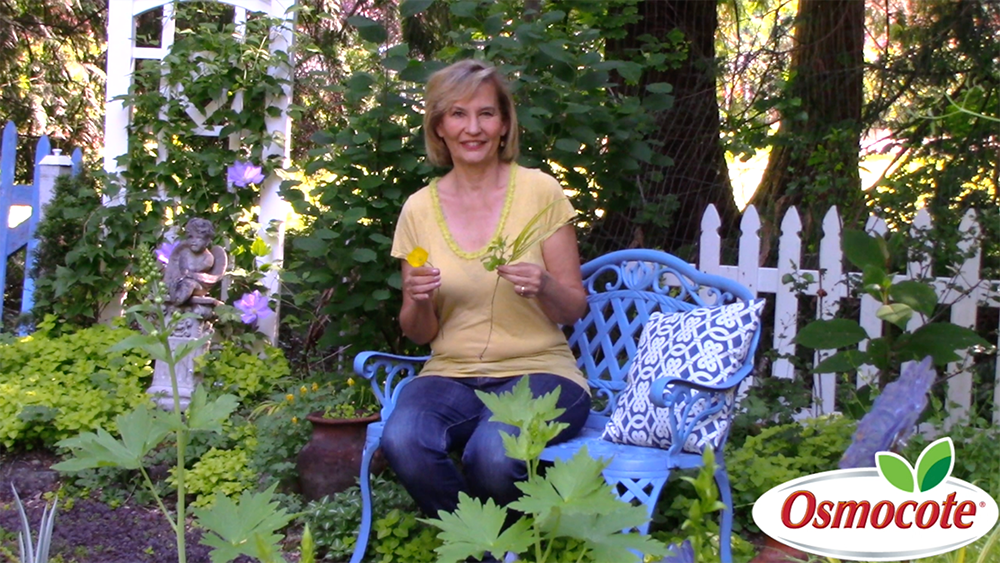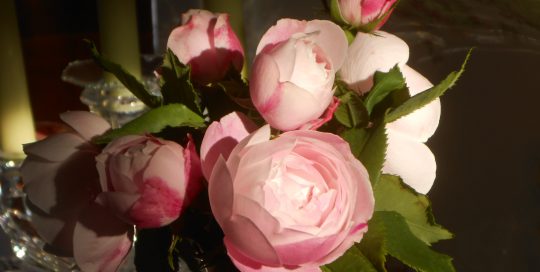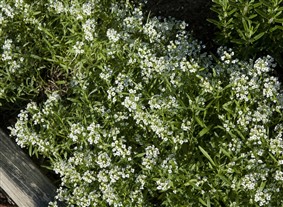While it’s wonderful to see the colors of springtime, it’s even better when there is fragrance. From crabapples to lily of the valley and all that grows between, there are scented plants that can make the springtime garden even more enjoyable.
Here is a baker’s dozen plants that are easy to add to your garden’s springtime inventory:
Geraniums
More accurately, Pelargoniums, all have scented leaves. But there is a class that has been bred to have fragrance reminiscent of apple, mint, rose, and even nutmeg. Most are grown for their leaves, their flowers, though pretty, are on the small and skimpy side. According to Faye Brawner in Geraniums: The Complete Encyclopedia, the degree of scent varies among the scented leaf plants. The fragrance comes from small scent glands secreted on the leaf. When the leaf is brushed or rubbed it emits the scent, which varies in strength depending on the time of day and the air temperature. Fragrance will be more evident when it is warm. Brawner recommends buying scented leaf Pelargoniums only after giving them the “sniff test,” as the degree of aroma varies even among the same named varieties.
Bay
Bay is used in cooking, and is great in hearty, long-cooking dishes. Laurus nobilis, the bay’s botanical name, is an extremely slow grower, that can be grown outdoors in a pot in a semi-shaded location. The plant is native to the Mediterranean, and resents humidity. In its natural habitat, it can grow up to 60 feet tall, but for gardens, it can be pruned, which is a great way to harvest leaves that can be dried and stored for cooking for up to a year. In ancient Greece, bay leaves were woven into wreaths to crown the victors of various contests.
Peonies
Peonies are not all fragrant, and those that are fragrant don’t all have a good scent. The aroma can range from rose-like to bitter and medicinal. Although some people complain about their flowers’ short lifespan, peonies require little care beyond sunshine, space and clean-up down to soil level in the fall for the herbaceous varieties. Some of the most fragrant I’ve experienced include ‘White Cap’, ‘Chestine Gowdy’, ‘Big Ben’, and ‘Duchess de Nemours’.
Fringe Tree
Fringe tree is an apt name for Chionanthus virginicus, a native shrub or small tree with fragrant flowers that dangle like delicate white icicles from the shrub’s branches. This easy to grow native can be pruned, but only within a couple of weeks after it is finished blooming, as its flowers form on stems grown that same year for the next spring. Fringe tree is hardy to Zone 4, and will bloom in part shade.
Witch Hazel
Witch hazel isn’t a showy plant. In fact, one of its best features—its fresh, spicy scent—comes when you least expect it. Hamamelis vernalis, is native to the south-central portions of the U.S., and one of the best reasons for gardeners to get outdoors in February. That’s when it starts to flower, and can continue through April if the weather remains cold. Its blossoms are inconspicuous at first, lining up like closed up little claws along the stems. The gold flowers elongate as they mature, all the while holding onto their wonderful scent. As a bonus, the leaves turn golden yellow in fall.
Mignonette
Mignonette has been loved by some seriously famous folks, namely the Bonapartes back in Revolutionary France. Napoleon brought seed of Reseda odorata back to Josephine from his Egyptian campaign and it caught on wildly for its crisp raspberry scent. It became popular in London, where it was grown on balconies in order to disguise the scent of the city. Reseda odorata resents transplanting and should be started from seed where it will grow. Start it as soon as the danger of frost has passed. It has a relatively short life, as it will peter out when the weather turns hot.
Carnations
Carnations have gone the way of roses in the cut flower industry—they’ve lost their scent. But several new varieties for the garden have been introduced complete with fragrance. One series out of the UK is called Scent First, and consists of at least half a dozen double and semi-double varieties, all with a spicy fragrance. A new scented single introduced by Intrinsic Perennial Gardens in Illinois is called Dianthus ‘Gary Eichhorn’. Scent from Heaven was bred in New Zealand, and consists of seven fragrant bi-colored varieties.
Lily of the Valley
Lily of the Valley is a beautiful flower. Its waxy bell-shaped flowers offer up a scent that’s been used in perfumes for centuries. It’s no wonder gardeners plant them. One of the good things about Lily of the Valley is its ability to smother any weeds in its path.
Tulips
Tulips can be fragrant, and it’s well worth a search for the scented ones. I found three tulips with fragrance that have been charming me with their scent over the past few years. Some of the older varieties, and they’re offered by Old House Gardens, are quite fragrant, with a scent like rose. Longfield Gardens offers a fragrant tulip collection. I’d given up on tulips because of their short-lived nature, but when I discovered the fragrant varieties, I was sold on giving them a second shot.
Sweet alyssum
Sweet alyssum (Lobularia) is another old-fashioned flower we sometimes take for granted. I like to plant it from seed, or even buy it in flats at the garden center. Lobularia ‘Benthamii’ doesn’t have double flowers, and it’s certainly not compact like most of the newer hybrids, but it has the strongest fragrance. Scatter seeds where you want a sweet honey scent in earliest spring for flowers the same year.
Viburnum
Viburnum is a shrub you must have room for, as most grow quite large. Those with fragrant flowers include a hybrid variety called ‘Mowhawk’, which I’ve been growing for at least 10 years. Even in a spot that’s in part shade and somewhat crowded, it blooms with the most fragrant waxy white flowers that I’d hate to be without from mid to late April. Another good Viburnum with fragrance is the cultivar ‘Cayuga’, which is said to be compact at six to seven feet tall.
Crabapples
Crabapples got a bad rap when homeowners found that the big fruit they dropped in late summer was a nuisance. Luckily, hybridizers have introduced several cultivars of Malus with tiny fruit that remains on the tree throughout the winter. When deciding on a variety, keep disease resistance in mind. Fragrant varieties with good resistance to scab, blight and rust and mildew include ‘Sargent’, ‘Sugar Tyme’, ‘Dolgo’, and ‘Lollipop’.
Clematis
Clematis are sometimes fragrant, even the early bloomers. A new variety called ‘Fragrant Star’ is said to have a vanilla scent. Another, called ‘Sugar Sweet Blue’ is known for its wilt resistance as well as its fragrance.
Shrubs that bloom in spring are notoriously fragrant for good or ill. Consider lilac, mock orange and Daphne, all of which bloom spectacularly for a short time before summer sets in. With the addition of fragrance, you’ll have even more incentive to get out in the garden.

